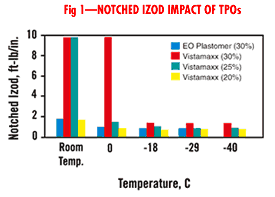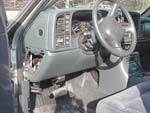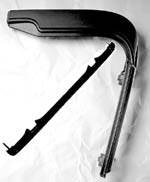End Markets
Plastic-Metal Hybrids Make Headway On and Off the Road
Plastic-metal hybrids are replacing all-steel structures in automotive front-end modules at an accelerated rate.
Read MoreBreaking Into Medical Films
Producers of barrier food wraps are invading the exclusive club of medical film makers. The new guys are shaking things up by introducing more complex films to cut the cost of medical packaging.
Read MoreNew Metallocene TP Elastomers Tackle Films, Fibers, TPOs
The Vistamaxx family of propylene-ethylene specialty elastomers recently unveiled by ExxonMobil Chemical (see Your Business In Brief, August 2003) holds promise in a broad range of applications from very soft fabrics and films to very hard TPOs.
Read MoreNPE News Wrap-Up: Materials
New materials at NPE 2003 target automotive, appliance, and packaging sectors. Engineering thermoplasticsdominate the news, but there were also severalnew TPEs and a few polypropylene introductions.
Read MoreNew Generation Nylon/ABS AlloysTarget Automobile Interiors
A family of highly compatibilized alloys of nylon 6 and ABS for injection molding has been launched by Rhodia Engineering Plastics.
Read MoreBlow Molding Gets Green Light in Detroit
Technical blow molding is changing the contours of automotive interior trim, load-bearing floors, seat-back systems, and under-hood ducting. Favorable economics, process refinements, and the emergence of tailored materials and equipment are taking the brakes off blow molding's earlier limits, and pointing a way to cost cutting.
Read MoreFuel Cells Jolt Plastics Innovation
Optimists view fuel-cell vehicles and power appliances as a coming bonanza for plastics processors. They see potential demand for billions of pounds of thermosets and engineering thermoplastics in plates, membranes, manifolds, pumps, plumbing, and more. But molding challenges and cost hurdles mean success won’t come easily.
Read MoreNanocomposites Broaden Roles in Automotive, Barrier Packaging
Nanocomposites are gradually gaining acceptance in the mainstream of global plastics processing. These polymer compounds, containing relatively low loadings (under 6% by weight) of nanometer-sized mineral particles, are beginning to show up in polypropylene and TPO-based automotive exterior claddings, barrier beer bottles, nylon packaging films, polyethylene pipe and wire/cable coatings, and more.
Read MoreIn-Line Compounding of Long-Glass/PP Gains Strength in Automotive Molding
Another approach to long-fiber thermoplastic (LFT) molding is gaining credibility for producing a range of structural and semi-structural automotive parts. It is called direct LFT processing, and is already widely practiced in Europe.
Read MoreNew Polypropylene/PPO Alloys Fill a Cost/Performance Gap
A brand-new family of thermoplastics for automotive and other markets offers an intermediate range of cost and performance between those of TPOs and engineering resins such as nylon, ABS, long-glass PP, and some modified PET and PBT materials. GE Plastics, Pittsfield, Mass., has broadened its Noryl range of PPO alloys by adopting a new matrix material: polypropylene. New patent-pending technology allows the incompatible PP and PPO materials to be blended so as to create new balances of stiffness, toughness, and heat resistance in a moderate price range. Initial Noryl PPX grades are priced between $1.20 and 1.80/lb.
Read More









